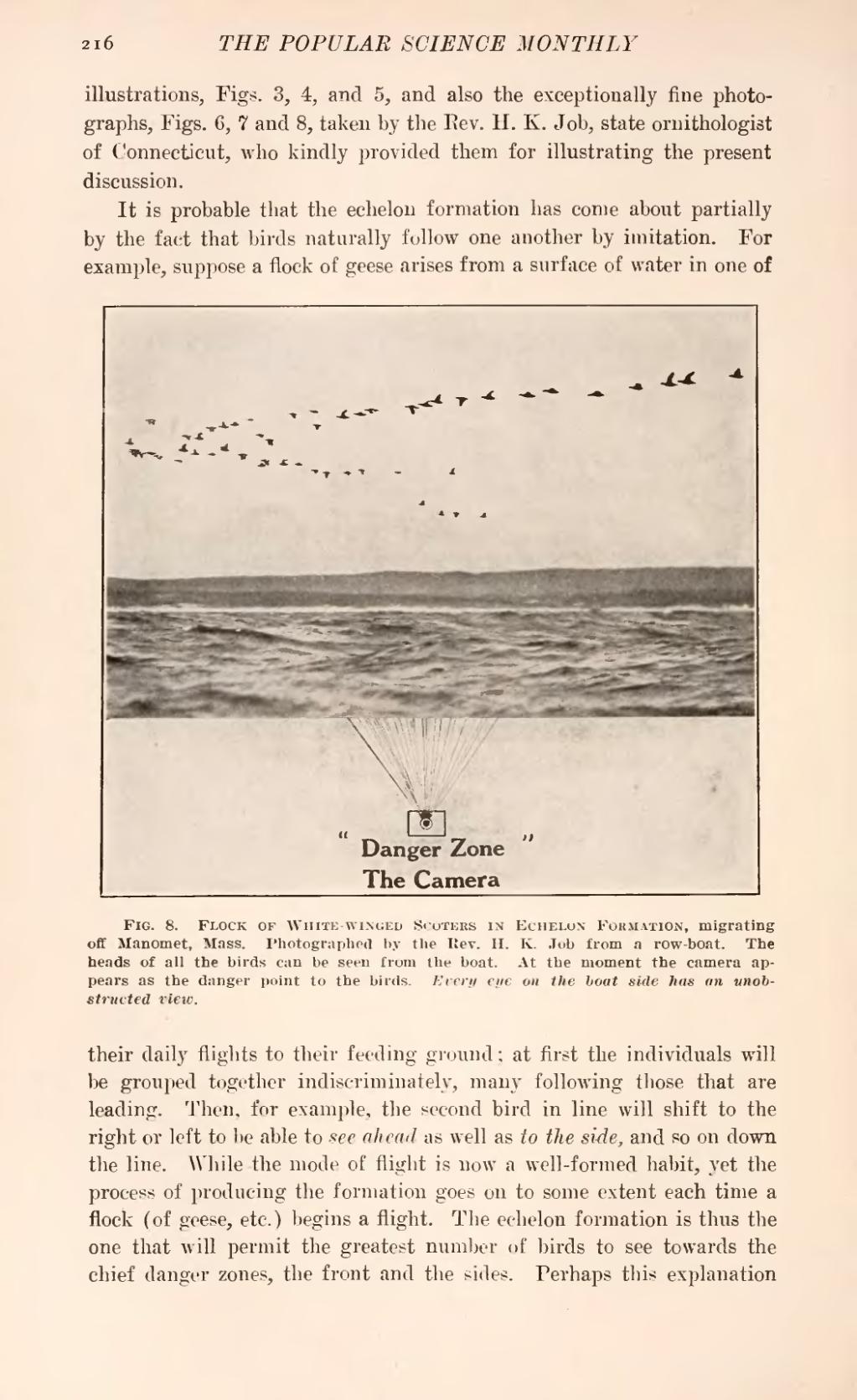illustrations, Figs. 3, 4, and 5, and also the exceptionally fine photographs, Figs. 6, 7 and 8, taken by the Rev. H. K. Job, state ornithologist of Connecticut, who kindly provided them for illustrating the present discussion.
It is probable that the echelon formation has come about partially by the fact that birds naturally follow one another by imitation. For example, suppose a flock of geese arises from a surface of water in one of
Fig. 8. Flock of White-winged Scoters in Echelon Formation, migrating off Manomet, Mass. Photographed by the Rev. II. K. Job from a row-boat. The heads of all the birds can be seen from the boat. At the moment the camera appears as the danger point to the birds. Every eye on the boat side has an unobstructed view.
their daily flights to their feeding ground; at first the individuals will be grouped together indiscriminately, many following those that are leading. Then, for example, the second bird in line will shift to the right or left to be able to see ahead as well as to the side, and so on down the line. While the mode of flight is now a well-formed habit, yet the process of producing the formation goes on to some extent each time a flock (of geese, etc.) begins a flight. The echelon formation is thus the one that will permit the greatest number of birds to see towards the chief danger zones, the front and the sides. Perhaps this explanation

